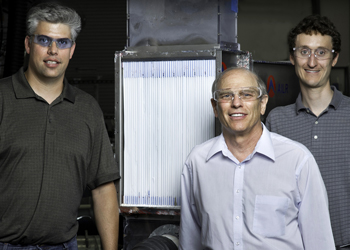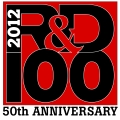Evaporative coolers, which use water as a refrigerant, are one of the few viable energy-saving technology alternatives to air conditioning. But they only function when the air is dry, and tend to deliver humid air.
A new technology from the National Renewable Energy Laboratory (NREL), Boulder, Colo., AIL Research, Princeton, N.J., and Synapse Product Development LLC, Seattle, Wash., has the potential to bring evaporative cooling to a wider audience. DEVAP: Desiccant-Enhanced Evaporative Air-Conditioning operates on the same principle, but is indirect: Incoming air is in thermal contact with a moistened surface that evaporates the moisture into a separate air stream. As the evaporation cools the moistened surface, it draws heat from the incoming air without adding humidity to it.
The system uses a desiccant to absorb water vapor. Because this is an exothermic process, it releases heat that can warm both the desiccant and the incoming air. However, DEVAP’s liquid desiccant is also in contact with a plastic sheet that provides thermal contact between the desiccant and a stream of water, which is wicked into a flocked surface that is bonded to the plastic sheet. As outdoor air flows past, water evaporates, cooling this surface. The cooler water also draws heat from the desiccant, keeping it cool and maintaining its effectiveness. The two stages of DEVAP allows it to operate effectively in a wide range of climates without consuming high levels of water.
Technology
Air-conditioning system
Developers
National Renewable Energy Laboratory
AIL Research
Synapse Product Development LLC
Development Team

The DEVAP: Desiccant-Enhanced Evaporative Air-Conditioning Development Team
Eric Kozubal, Principal Developer, NREL
Jay Burch, National Renewable Energy Laboratory
Dylan Garrett, Synapse Product Development LLC
Ian Graves, Synapse Product Development LLC
Ron Judkoff, National Renewable Energy Laboratory
Andy Lowenstein, AIL Research
Steven Slayzak, formerly with National Renewable Energy Laboratory
Redwood Stephens, Synapse Product Development LLC
Jason Woods, National Renewable Energy Laboratory
